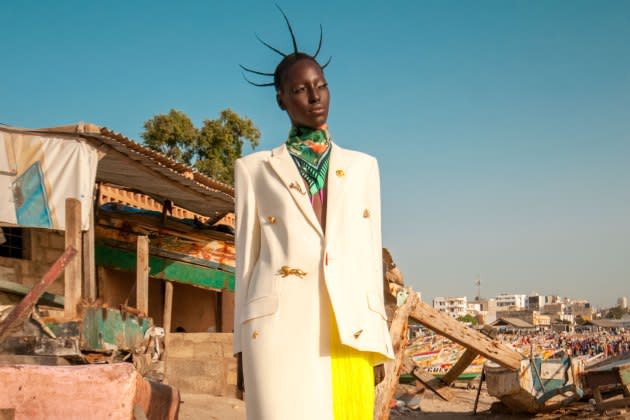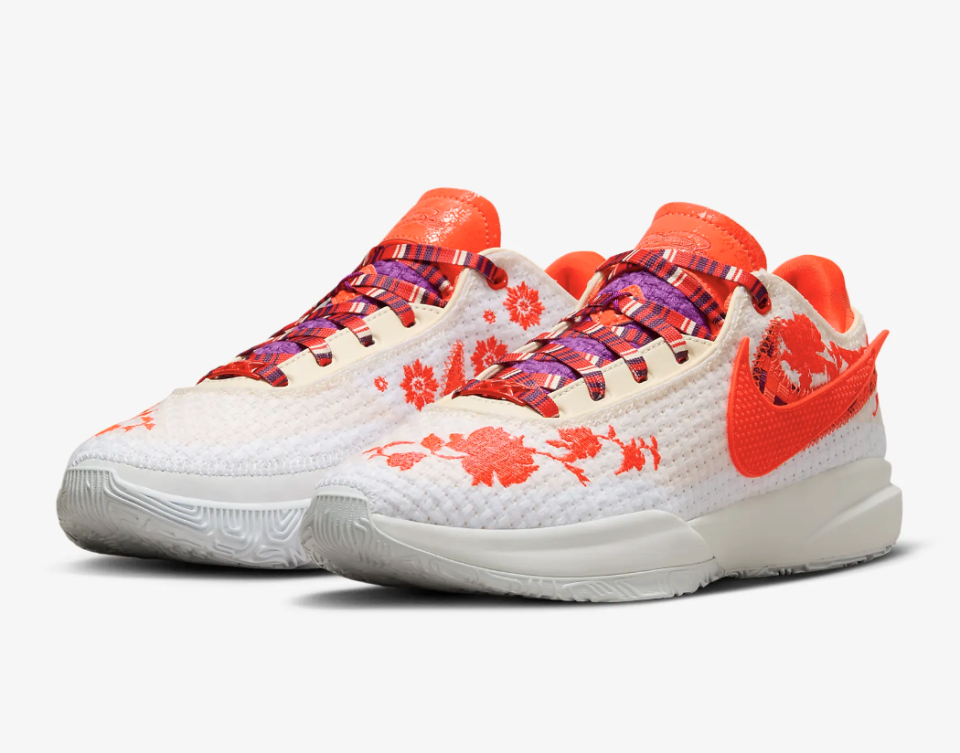Is ‘Unfashion’ the Best Way to Be In Fashion? Mimi Plange Thinks So

For Mimi Plange, fashion seems to have lost its why.
More from WWD
Perhaps it’s the frenzied pace of the industry that, in many ways, is still chasing new despite the arrival of slow fashion and brands trying to do more with less. Perhaps it’s the Amazon-ization of everything that helped consumers develop an impatience for product that takes more thought and time. Perhaps, as the designer behind her namesake label that counts collaborations with Manolo Blahnik and Nike, and was earlier this month named among the brands carried at the newly opened Atelier Jolie, says, it has been more about things that resonate on the surface than those that dig deeper.
In her storytelling, Ghanaian-American designer Mimi Plange is going deeper — back, in fact, to pre-colonial Africa in creating the label she describes as sharing stories of old African traditions and interpreting them into classic American sportswear.
African fashion, Plange said, is often seen as “something new that just came out of nowhere. But it’s been there. It’s been influencing for a long time.”
“In pre-colonial Africa, there are things that were done that, to me, were considered fashion, like decorating the body, piercings, body tattooing, body painting and body stretching [these body modifications, Plange contended, set the stage for modern-day British punk]. Over time, their forms of beauty were kind of lost and we got into this whole ideal of what fashion is,” she said. “In a lot of ways, the core African fashion has been a little bit lost…things that were seen as primitive or barbaric or…that weren’t seen as beautiful, I’m turning them into things I find to be beautiful and giving light to a type of beauty I feel has been ignored.
“When we talk about African fashion, we always think about prints…but it doesn’t start with prints. That’s not where it all came from. It started with the body. It started with the skin,” Plange said.

Scarification, the often ritualistic practice of cutting into the skin in specific patterns or designs, informed one of Mimi Plange’s earliest collections. She drew from patterns in the skin of individuals from tribes like the Betamarribe in Benin and turned them into textiles for a line whose pieces now live in Museum of Fine Arts, Boston. This particular tribe’s scarification, Plange said, “is very linear and very, very elegant…Just seeing them decorate the skin [whether for protection, spirituality or tradition], I thought: this is fashion. This is what fashion was like.
“If I wanted to see something from pre-colonial Africa evolve into fashion today, I wanted the evolution to start from there,” she said.
It’s the same thought process of storytelling that carries into Mimi Plange’s fashion today, where African principles of symmetry, abstraction, distortion, color theory, spirituality and the use of nature as the main inspiration in design contribute to the label’s style. Blazers adorned with vintage-inspired brooches of animals and flora, varsity jackets and sheath dresses are part of her collection. The mixing of staple silhouettes with storytelling from the continent helps inform Mimi Plange design partnerships, too.
In creating the LeBron 20 x Mimi Plange “Ceremony” sneaker, Plange’s fifth shoe created in collaboration with Nike — released this fall in line with the basketball player’s 20-year NBA anniversary — the meld of story and style is apparent.

“We wanted to celebrate that transition from his first days to becoming kind of like an elder in the NBA, so I looked to the Maasai tribe because they have specific ceremonies where the young boys transition from a young warrior to an elder,” Plange said.
As such, florals stitched into the sides of the sneaker and at the toe are from a motif in a Maasai flag used in the ceremonial journey from boyhood to manhood. One swoosh reflects the Maasai signature plaid, and another swoosh layered on top of it, studded like beading, nods to the bead work done in the community.
“I like to create something that doesn’t necessarily appear African but it is African,” she said of both the Ceremony sneaker and her design ethos at large. “What I’m trying to do is share it with as many people as possible so that they can come into the story. I’m trying to make something that is inclusive so that you want to learn more about where this comes from.”
At its core, Mimi Plange, the label, is about injecting the “forgotten histories of rituals” into design.
“I just want to be a master storyteller who shares stories of unique identities that inspire. I graduated from the idea of wanting to be a fashion designer to understanding I could only achieve my goals by bringing my own unique form of magic into the world…This idea is Unfashion,” Plange said. “It is in contrast to the current pop culture climate that pushes sameness and conformity, while masquerading as diversity. Being Unfashion is about not feeling like you have to follow or belong to any one group or entity, nor does it mean we have to adhere to a roadmap of design. We will share stories of individuality that celebrate those who disrupt the status quo through their style.”
While more link-ups are on the way for the label — which counts Michelle Obama, Yvonne Orji and Princess Astrid of Belgium among its cohort of celebrities who have worn the brand — Plange is working on a collection slated to show during fashion week in February.
“It’s time for us to come back on a bigger stage,” she said.

Best of WWD
Solve the daily Crossword

